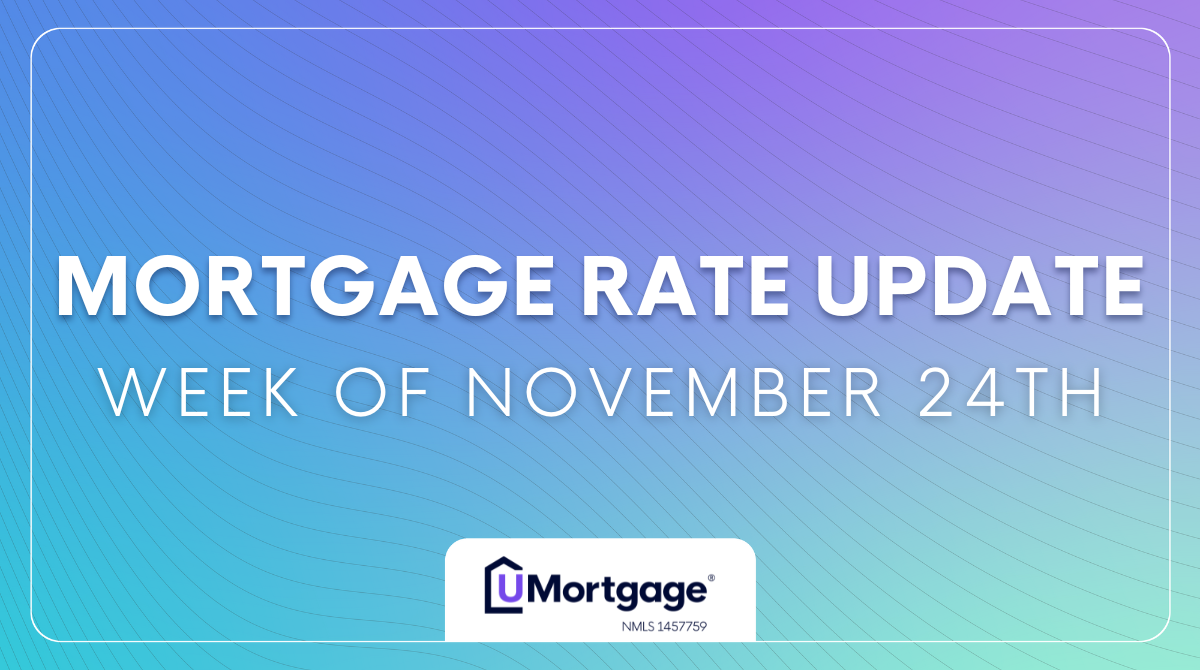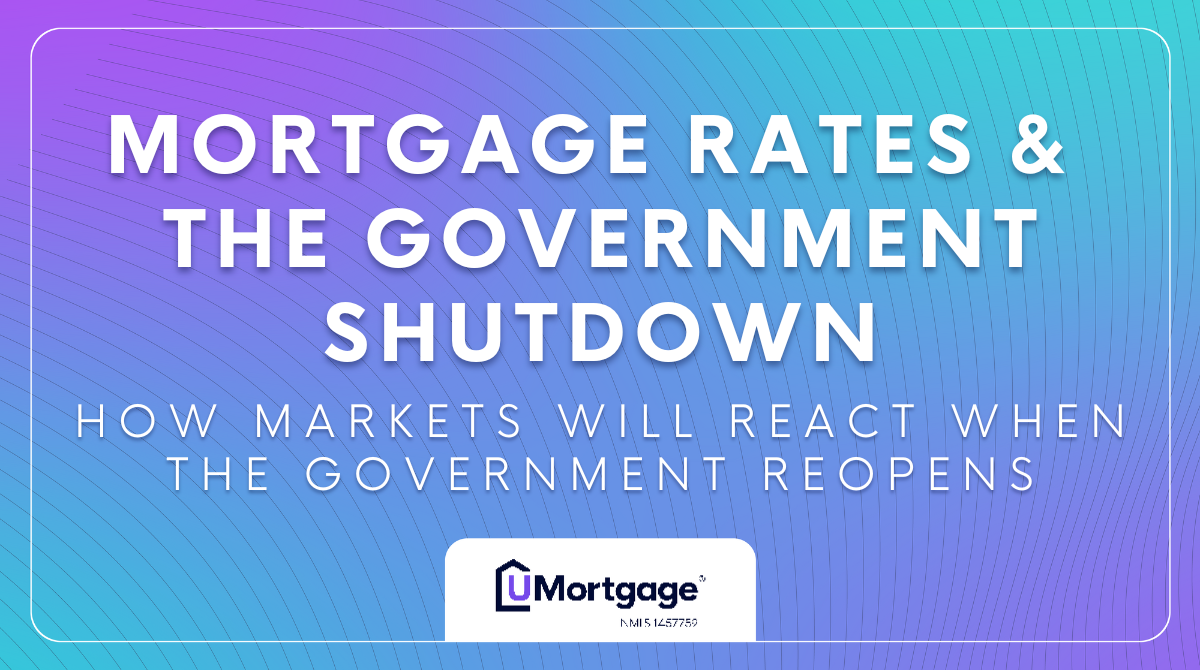

John Goski
Meet John!
As your trusted UMortgage Loan Originator, my goal is to simplify the mortgage process to make your home loan experience easy to navigate! Please reach out so I can help start your home financing journey.
Serving Homebuyers In:
- New Jersey
- Texas
Mortgage Calculators
Monthly Payment
Find your monthly payment
What does a monthly mortgage payment look like for you? Get an estimate with some basic information.
Estimated Monthly Payment
The UMortgage mortgage calculators are for estimation purposes only. This is not a commitment to lend. For an exact quote based on your individual financial circumstances, please contact me.
Affordability
What is your budget?
Curious about how much you can afford to spend on a home? Use our calculator to get an estimate on your maximum budget.
Maximum Home Price
Maximum Monthly Payment
The UMortgage mortgage calculators are for estimation purposes only. This is not a commitment to lend. For an exact quote based on your individual financial circumstances, please contact me.
Refinance
Should you Refinance?
Refinancing might save money on your monthly mortgage payments, putting cash in your pocket. With some basic information from you, we can help decide if this is a good path for you.
Monthly Savings
Total Savings
The UMortgage mortgage calculators are for estimation purposes only. This is not a commitment to lend. For an exact quote based on your individual financial circumstances, please contact me.
VA Entitlement & Payments
Discover Your Buying Power With Our VA Home Loan Calculator!
If you are a veteran, an active-duty member of the military, or the spouse of a current or former military member, you are eligible to purchase a home with your VA home loan benefit! By using the calculator below, you can get a glimpse into your buying power and the estimated monthly payment of your VA loan as you start planning your homebuying journey.
Estimated Monthly Payment
Required Down Payment
Limit
$0
Entitlement Used
$0
Available Entitlement
$0
No Limit
How is my monthly payment calculated?
The UMortgage mortgage calculators are for estimation purposes only. This is not a commitment to lend. For an exact quote based on your individual financial circumstances, please contact me.
Your Mortgage Questions, Answered!

Housing Market Update | Week of November 24th
Mortgage rates inched lower last week as belief in a December Federal Reserve rate cut increased. The BLS released its September jobs report with mixed figures: it showed 119,000 jobs created, but the unemployment rate also rose to 4.4%, and the July and August job creation figures were revised lower. This, along with more dovish comments from voting Fed members supporting a rate cut in December, flipped the odds of a third consecutive rate cut from 30% to nearly 80% as of this morning. Of course, these odds don’t guarantee a rate cut, especially given that our next BLS jobs report is delayed until after the December Fed Meeting. It does put a bit more pressure on our weekly jobless claims and inflation data, both of which we’ll get during this shortened Thanksgiving week. Last Week's Mortgage Rate Recap Rates Dropped Slightly Mortgage rates fell slightly last week after the September BLS jobs report was released. The report showed that 119,000 jobs were added in September, more than double the expected 50,000, and that the unemployment rate increased to 4.4% due to higher labor market participation. With July and August’s reports both revised downward, the average number of jobs created over the past five months is only 38,600. We also had a few Fed members speak in favor of a December rate cut last week, notably NY Fed President John Williams, who advocated more cuts in the “near term” due to the labor market. After his speech, the odds of a third straight Fed rate cut in December increased to nearly 70%. This sent the 10-year lower on Friday and this morning. This Week's Mortgage Rate Forecast Rates Should Be Calm We have a shorter week ahead with markets closed for the Thanksgiving holiday this Thursday. The bond and stock markets can often be more volatile than usual during short holiday weeks, but the better mortgage spreads we’ve seen this year have protected rates from that kind of volatility. From a data perspective, we’ll get the September Producer Price Index (PPI) inflation report, retail sales figures, and the Case-Shiller Home Price Index tomorrow morning. We’ll also want to keep an eye on the weekly Initial Jobless Claims report, since we won’t get a BLS jobs report until after the December 10th Fed Meeting. Odds of a third straight rate cut went up last week, but it’s still reliant on weak labor data. If you have any questions or want some real-time market analysis from a mortgage expert, follow this link to connect with a UMortgage Loan Originator near you!

How a Cash-Out Refinance Can Help Fund Your Holiday Spending
The holiday season is approaching, and for many, this time of year can put families under financial strain. Between gifts, travel, and festive gatherings, the expenses can quickly add up, leaving some feeling stretched thin. For homeowners, a cash-out refinance can be an effective way to access home equity, providing extra funds to cover holiday costs without relying on high-interest credit cards or personal loans. By using the equity they've built, homeowners can enjoy a more relaxed and financially stable holiday season. What is a Cash-Out Refinance and How Does One Work? A cash-out refinance allows homeowners to replace their current mortgage with a new loan that provides extra funds by tapping into the equity homeowners have built in their property. Essentially, homeowners can "cash out" a portion of their equity to use however they like—whether it’s to pay off high-interest debt, fund renovations, or, in this case, cover holiday expenses. This process works by allowing homeowners to borrow against their home equity, which is the difference between the home’s appraised market value and the remaining mortgage balance. By taking out a larger loan, the borrower receives the excess in cash after paying off the original mortgage. For a clearer picture of how this can work, use UMortgage’s Refinance Calculator to see what a cash-out refi might look like for you. For a more in-depth quote, fill out this form to connect with a UMortgage Loan Originator or reach out to your existing UMortgage partner. Home equity is a valuable asset that accumulates over time as mortgage payments are made and property values appreciate. With a cash-out refinance, homeowners can leverage this value without selling their property, providing access to funds when needed most. The Benefits of a Refi for Debt Consolidation & Holiday Spending While credit cards might seem like a tempting way to cover holiday expenses, the high interest rates can quickly make seasonal spending hard to manage. According to the Federal Reserve, the average credit card interest rate is currently around 22.76%, which can lead to a cycle of unmanageable debt. “There’s a lot of high interest out there, and people are carrying more debt than they’ve ever carried,” says Jimmy Hobson, UMortgage’s National Sales Leader. “A cash-out refinance not only helps you avoid this kind of debt but also gives you a way to tap into your home’s equity that you’ve already built through monthly mortgage payments.” With a cash-out refi, instead of taking on even more debt, you’re using the money you’ve already invested instead of relying on high-interest credit cards or personal loans. After you’ve closed your refinance, you'll get some breathing room before your first mortgage payment, typically due on the first of the month following a full 30 days after closing. For example, if you close on November 14th, you won’t make your first mortgage payment until January 1st. This means you could benefit from a month without a mortgage payment, freeing up extra funds for holiday spending or unexpected expenses. How to Know You’re Eligible for a Cash-Out Refinance Before you start planning your refinance, assess your eligibility and whether it makes sense for your current financial picture. Here are some things to consider: Assess Your Home Equity You should start by calculating your home equity to determine if you qualify for a refi. Your equity is the difference between your home’s current market value and what you still owe on your mortgage. You’ll need an appraisal to determine your home’s market value. A UMortgage Loan Originator will be able to connect you with a reliable appraiser in your area to help you determine the equity owned on your home. Reviewing Your Long-Term Goals There are many benefits to a refinance, but ultimately, you should only do it if it fits your long-term goals. Would it be more beneficial to use your home’s equity to invest, make home improvements, or save for the future? Taking out funds now can affect your mortgage balance and monthly payments, so consider how it aligns with your plans and whether it will keep you on track to achieve financial stability or growth. Get Connected with a UMortgage Loan Originator A UMortgage Loan Originator is your key to personalized mortgage advisory that puts your long-term financial health first. Once you connect with your LO, they’ll walk you through every step, from eligibility to planning, and ultimately unlock your home’s potential, giving you a smart, effective option for covering seasonal expenses. Follow this link and fill out the form to get connected with a UMortgage LO in your area. A cash-out refinance lets you tap the equity you've already built in your home, helping cover seasonal expenses while keeping your financial health in check. Whether for gifts, travel, or end-of-year projects, using your home’s value wisely can make all the difference in enjoying a stress-free holiday season. Follow the link above to see if this option will work for you this holiday season!

How Will Mortgage Rates Move After the Government Shutdown?
The longest government shutdown in U.S. history officially ended on November 12, bringing long-awaited clarity to financial markets that have been flying blind since the shutdown began on October 1. For more than six weeks, key government agencies didn't release critical economic data, such as jobs reports and inflation readings, leaving the Federal Reserve and investors without their usual guideposts. As this data finally returns, we can expect market activity to pick back up and mortgage rates to start moving again. When Will Economic Data Be Released? The government shutdown delayed the release of several weekly & monthly economic reports essential to the Federal Reserve’s monetary policy, including the PCE and CPI inflation reports and the monthly BLS jobs report, which are typically the most impactful. When the shutdown ends, what happens to those reports? Let’s break it down. Consumer Price Index (CPI) inflation report: The September CPI report, originally scheduled for October 15, was released on October 24 as a requirement for Social Security cost-of-living adjustments. It showed core CPI increased by 0.3%. The October report was originally due on November 13th, but because that data hasn’t been collected yet, it will likely be delayed until December. The November report is due December 10th, and we could see the October print included. Bureau of Labor Statistics (BLS) Jobs Report: The September BLS jobs report was initially scheduled to be released on October 3rd. The data for this report were collected before the shutdown began, so it’s likely to be released between November 17 and 21. As for the October jobs report, the BLS will need to survey companies and individual households. We likely won’t get this report until December. The November BLS report is currently scheduled for release on December 5. The BLS surveys businesses and households for its monthly reports starting the week containing the 12th day of the month. Given that the government will reopen on November 17th, the November jobs report may be delayed by a week. Personal Consumption Expenditure (PCE) inflation report: It’s important to note that PCE is the Federal Reserve’s preferred inflation report. September’s PCE report was initially scheduled to be released on October 31st. It’s likely to be delayed until late this month. The October PCE report, initially due November 26th, will likely be delayed until mid-to-late December. How will rates move when this data is released? So far this year, the average mortgage rate has dropped by a full percentage point. What’s driven this drop has been a steadily deteriorating jobs market as seen from the BLS data since May this year. The Fed specifically cited the labor market as the reason for the rate cuts we saw in September and October. Inflation also remains a concern and will need to either drop or stay under relative control in the PCE and CPI reports. When these reports are released, we’ll likely see some market volatility. If the BLS labor data is weak and/or inflation doesn’t rise quickly, rates should go down. If the labor market shows signs of improvement or inflation starts to rise out of control, rates might rise. How to navigate the rate market for the rest of 2025 The best way to protect yourself against a volatile housing market is to work with experienced mortgage professionals whom you can trust. UMortgage has Loan Originators licensed nationwide and ready to help you time the market & maximize the wealth-building benefits of homeownership. Ready to get started? Fill out this form to get connected with a Loan Originator near you.
Serving Homebuyers In:
- New Jersey
- Texas
